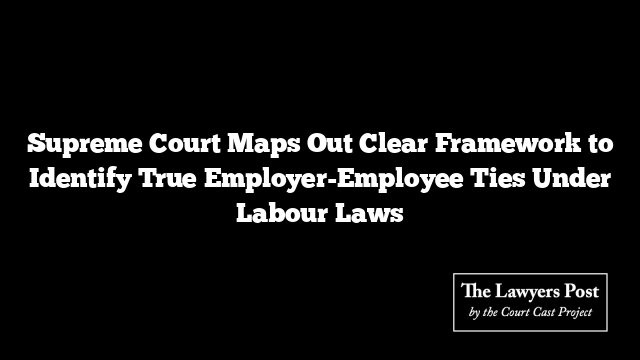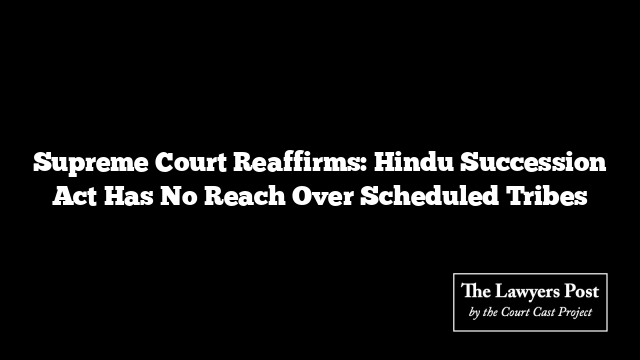In a ruling that sharpens the lens through which Indian courts view workplace hierarchies, the Supreme Court has laid down guiding principles for determining who truly qualifies as an “employee” under key labour legislations like the Industrial Disputes Act, 1947 and the Factories Act, 1948.
A Bench comprising Justices JB Pardiwala and Sandeep Mehta unpacked decades of legal evolution on this subject, reaffirming that identifying an employer–employee relationship isn’t a one-size-fits-all exercise. Instead, it’s a “mixed question of fact and law” requiring a careful look at control, supervision, integration into the organisation, and economic dependence.
The Four Guiding Tests
The Court revisited four landmark tests that have shaped Indian jurisprudence on employment relationships — the Control Test, the Organisation (Integration) Test, the Multifactor Test, and the Refined Multifactor Test — each marking a step toward greater clarity and realism in defining the bond between worker and employer.
1. The Control Test
The oldest and most traditional yardstick, this test asks: Who holds the reins?
If the hirer dictates not only what work is to be done but also how it must be done, an employment relationship likely exists. Drawing from Shivanandan Sharma v. Punjab National Bank Ltd. (1955) and Dharangadhara Chemical Works Ltd. v. State of Saurashtra (1957), the Court noted that true employment goes beyond mere instructions — it involves supervision and authority over the manner of work.
However, as workplaces evolved, so did this concept. The “control” today is understood as “due control and supervision,” tailored to the realities of each case rather than a rigid formula.
2. The Organisation (Integration) Test
As industries became more specialised, the old master–servant model proved inadequate.
The Silver Jubilee Tailoring House v. Chief Inspector of Shops and Establishments (1974) case introduced the idea of integration — if a worker’s role forms an integral part of the main business, it points toward a genuine employment relationship. This test recognises that skilled professionals may not need day-to-day oversight, yet still function as employees if they are embedded within the organisation’s structure and purpose.
3. The Multifactor Test
Acknowledging that no single element captures the complexity of modern work arrangements, the Court endorsed the multifactor approach — a holistic examination that considers various indicators such as:
-
Control and supervision
-
Ownership of tools and equipment
-
Degree of integration
-
Chance of profit or risk of loss
-
Power to select, pay, suspend, or dismiss workers
The Court, citing Workmen of Nilgiri Cooperative Marketing Society Ltd. v. State of Tamil Nadu (2004), clarified that none of these factors are conclusive on their own. What matters is the totality of the working relationship.
4. Lifting the Corporate Veil
In situations where contractual structures are used to disguise the real nature of employment — such as hiring through intermediaries or contractors — the judiciary retains the power to pierce through the façade. Referring to Bengal Nagpur Cotton Mills v. Bharat Lal (2011), the Court reiterated that when arrangements are “camouflage” meant to obscure genuine employment ties, courts can directly recognise workers as employees of the principal establishment.
The Broader Implication
The judgment underscores a crucial point: employment in law is not defined by paperwork, but by substance.
In a labour landscape increasingly shaped by outsourcing and contractual work, the Supreme Court’s analysis reinforces the principle that real control, integration, and dependence — not just formal designations — determine who is an employee in the eyes of the law.
This decision stands as a detailed roadmap for courts, businesses, and workers navigating the grey zones of India’s evolving industrial ecosystem.





